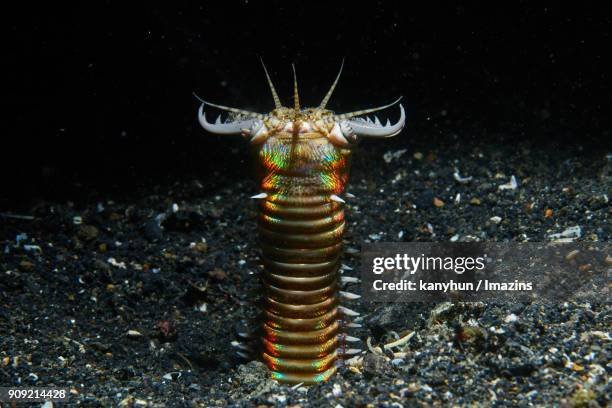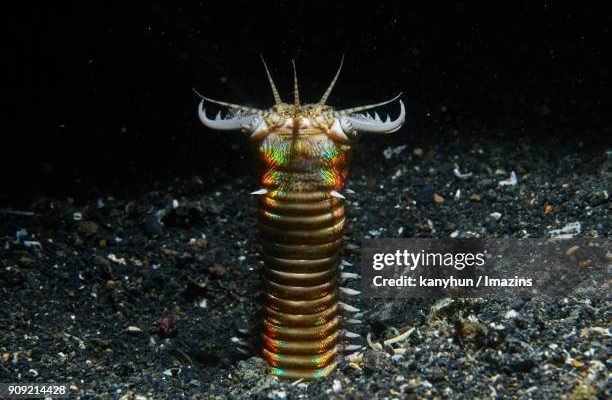
Nighttime is when Bobbit worms truly come alive. Their vibrant hues contrast beautifully against the dark backdrop of the ocean, creating an almost magical scene. If you’re gearing up to dive into this mesmerizing underwater adventure, understanding a few key tips can help you make the most of your experience. In this article, we’ll explore the best practices for photographing these creatures at night, including gear recommendations and essential techniques to ensure you capture their essence without disturbing their habitat.
Understanding Bobbit Worms: The Basics
Before diving into photography tips, it’s crucial to understand what Bobbit worms are and why they’re so captivating. Bobbit worms are elongated, segmented worms that can grow up to 10 feet long. They have powerful jaws and are often found in sandy or muddy substrates. Their color can range from bright greens to deep purples, making them visually stunning against the ocean floor.
You might be wondering: why photograph them at night? Nighttime gives these creatures an opportunity to emerge from their burrows to hunt. This behavior makes it easier to spot them and get that perfect shot. Plus, the low light conditions provide a striking contrast that highlights their colors. Just remember, patience is key when photographing these elusive beings!
Essential Gear for Night Photography
To successfully photograph Bobbit worms at night, you’ll need the right gear. Here’s a list of essential equipment you should consider bringing along for your underwater expedition:
- Waterproof Camera: A camera designed for underwater use is crucial. Look for one that offers manual settings and can shoot in low light.
- Strobe Lights or Video Lights: Lighting is key when shooting in dark environments. A good strobe or continuous light will help illuminate the worms without scaring them away.
- Wide-Angle Lens: A wide-angle lens allows you to capture the worm and its surroundings, creating context for your shot.
- Tripod or Stabilizer: Keeping your camera steady is important, especially in low light. Consider a tripod or a stabilizer that works underwater.
- Extra Batteries and Memory Cards: Night shoots can drain batteries quickly, so bring extras to avoid missing the perfect moment.
Here’s the thing: having the right gear not only enhances your chances of getting great shots, but it also makes the whole experience more enjoyable. You’ll feel more confident knowing you’re well-prepared!
Planning Your Dive: Timing and Location
Timing and location are critical when it comes to photographing Bobbit worms at night. First off, you want to choose a night with minimal moonlight. This way, the ambient light doesn’t overpower your strobe lights, allowing you to capture the vibrant colors of the worms more effectively.
Next, look for spots known to host Bobbit worms. These creatures favor sandy or muddy substrates, often hiding beneath coral or rocks. Local dive shops or online forums can be good resources for finding the best locations for night diving.
After you pick a spot, plan your dive accordingly. Ensure you dive during safe conditions, especially at night. You might want to partner with experienced divers or guides who know the area well. Diving with someone familiar with Bobbit worms can make all the difference!
Getting the Right Shot: Techniques for Success
Once you’re underwater and have located a Bobbit worm, it’s time to focus on getting the perfect shot. Here are some techniques to keep in mind:
1. **Work with Your Lighting:** Since you’re shooting in low light, adjust your camera’s settings to account for this. A wider aperture (like f/2.8 or f/4) lets in more light, while a slower shutter speed can help capture detail without underexposing the shot.
2. **Use Manual Focus:** Auto-focus might struggle in low light or with moving subjects like Bobbit worms. Switch to manual focus and take your time to ensure you get it right.
3. **Be Patient:** Bobbit worms can be skittish. If you rush your approach, you might scare them back into their burrows. Move slowly and steadily, allowing the worms to become accustomed to your presence.
4. **Experiment with Angles:** Don’t be afraid to try different angles. Getting low to the sand can create dramatic perspectives, showcasing the worm amidst its environment.
Here’s a little tip: sometimes, shooting a bit wider and cropping later can give you more options during post-processing. It’s all about flexibility!
Processing Your Photos: Tips for Editing
After capturing your underwater shots, editing can enhance their beauty even further. Here are some simple tips for processing your Bobbit worm photos:
– **Adjust Brightness and Contrast:** Increasing the brightness can help illuminate darker areas of your shot, while contrast can bring out the vibrancy of the worm’s colors.
– **Correct Colors:** Underwater photography often results in a blue or green tint. Adjust the color balance to make the colors more true-to-life.
– **Sharpen Your Image:** Use sharpening tools to bring out details, especially in the worm’s features. Just be careful not to overdo it.
– **Crop for Composition:** A well-composed shot can make a big difference. Don’t hesitate to crop if it helps focus on the Bobbit worm.
Each image tells a story. By refining your shots, you can ensure that the beauty of these creatures shines through.
Staying Safe and Respecting Marine Life
While it’s exciting to photograph Bobbit worms, it’s equally important to respect their environment. Here are a few guidelines to keep in mind during your underwater adventures:
1. **Avoid Touching or Disturbing:** Bobbit worms are sensitive creatures. Touching them or disturbing their habitat can cause stress and could harm their ecosystem.
2. **Watch Your Bubbles:** If you’re scuba diving, be mindful of your breathing. Bubbles can scare away marine life quickly, making it harder to get that perfect shot.
3. **Follow Local Regulations:** Always abide by local rules and regulations regarding marine life. Some areas may have restrictions on where you can dive or what gear is permissible.
By being a responsible diver and photographer, you help protect these amazing creatures and their habitats for future generations to enjoy.
Final Thoughts on Night Photography of Bobbit Worms
Photographing Bobbit worms at night can be an unforgettable experience filled with beauty and discovery. With the right gear, techniques, and respect for marine life, you can create stunning images that showcase these remarkable creatures. Remember, patience is your best friend in this adventure.
As you gear up for your night dive, keep these tips in mind. With practice and dedication, you’ll soon find yourself capturing the magic of Bobbit worms in ways that inspire others. So grab your camera, dive into the deep, and let your creativity flow!

